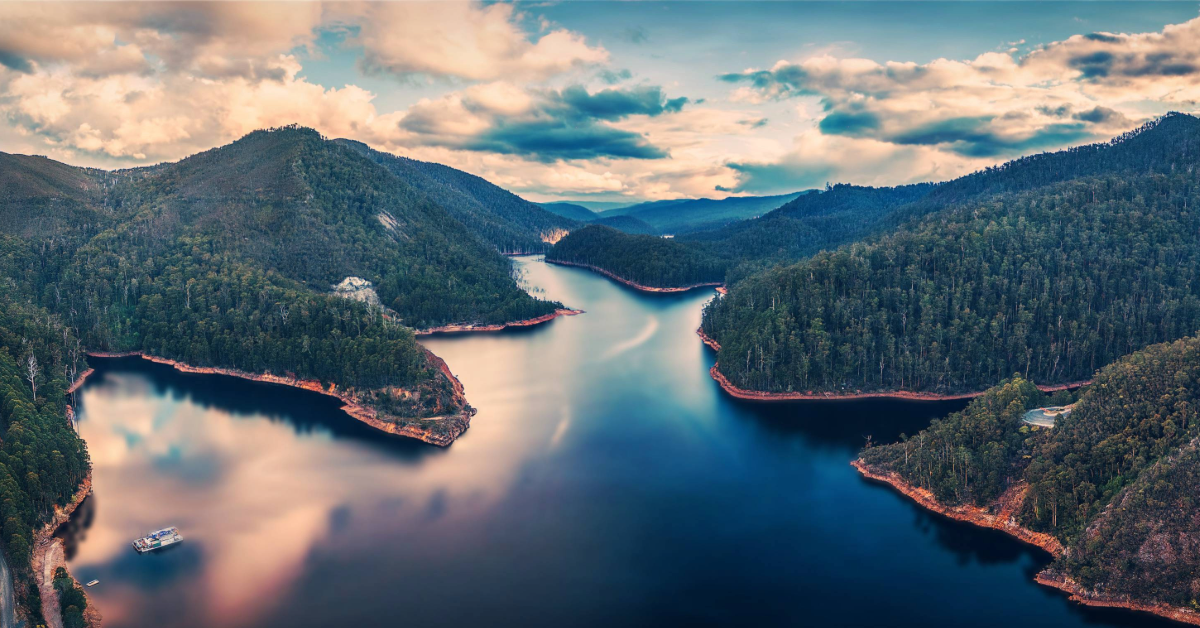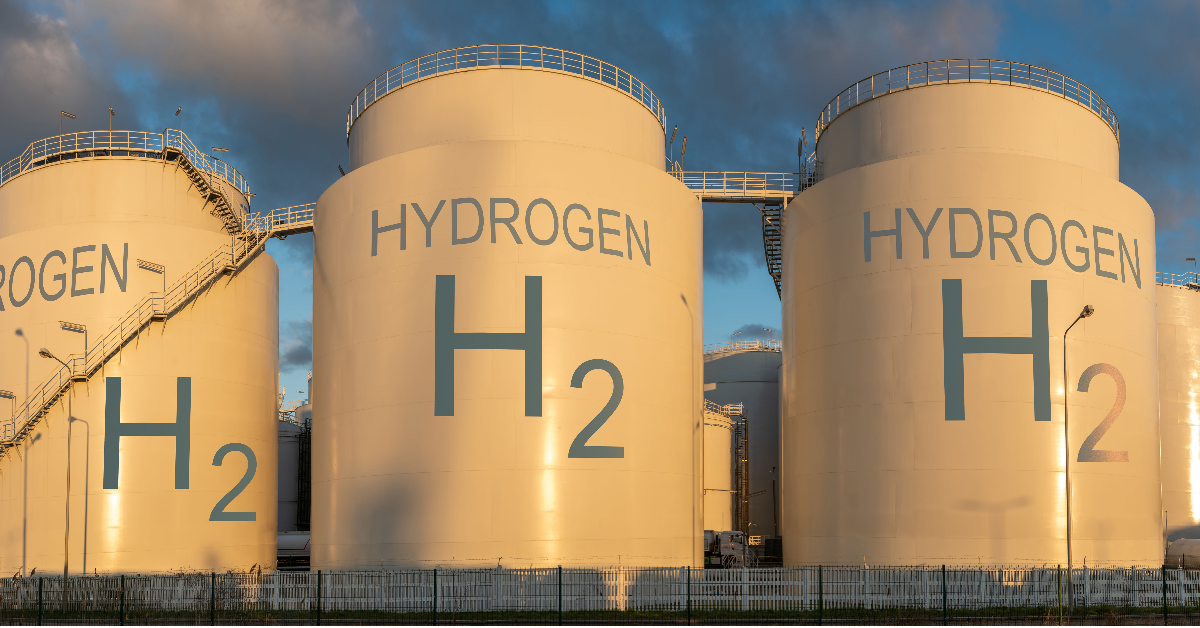Ren-Gas, Confidently Modeling the Future Impact of Hydrogen Production
Ren-Gas, Finnish P2X Project Development Company Ren-Gas is a Finland-based clean energy project developer. The company invests in the best...
4 min read
 Team Energy Exemplar
:
August 6, 2024
Team Energy Exemplar
:
August 6, 2024

Hydro Tasmania is Australia’s largest generator of renewable energy as well as its largest water manager and dam owner. Tasmanians have relied on hydropower to support the state’s economy, community and growth for more than a century. Over time, the organisation has built 54 major dams, 30 hydropower stations, and 2 major wind farms. Hydro Tasmania produces approximately 9,000 GWh of electricity each year. The organisation also has 14 TWh of storage capacity, more than the rest of the storage capacity of the National Electricity Market (NEM) combined, and is implementing plans to develop two new major hydropower construction projects.
In the 2024 Integrated System Plan (ISP) produced by AEMO, it was indicated that to accommodate the exponential expected growth in wind and solar generation, the NEM will need 46 GW of dispatchable storage capacity. Additionally, much of that 46 GW of storage capacity needs to be deep storage, which is storage capacity with a minimum generation duration of 10 hours. Deep storage is required to balance out the loss of solar generation overnight and to alleviate prolonged dips in variable wind and solar generation. Further interconnection across the NEM will also be required to enable the energy transition and unlock a reliable and sustainable future renewable energy system. In Tasmania, this interconnection is expected to come from the 1500 MW Marinus Link.
One solution to the NEM’s significant storage requirements for the future energy system is pumped hydro. Unlike some storage technologies, pumped hydro (and indeed hydropower) is a proven technology for storing clean energy at a large scale. Pumped hydro uses excess renewable generation to pump water from a lower storage back up to an upper storage to be stored for use to generate hydropower to ‘fill the gaps’ during periods where demand exceeds variable renewable generation supply.
Due to the nature of pumped hydro, the assets do have certain siting requirements. These include:
- A significant altitude difference between the storages – also known as a high head
- A short distance between storage locations
- Favourable ground conditions for underground tunneling
- Transmission availability / proximity
- Manageable environmental and social risks
- High round trip efficiency (ratio of electricity used to electricity produced)
Given these requirements, Tasmania is particularly well suited for pumped hydro siting, and between 2017 and 2020 Hydro Tasmania performed analyses to assess 2,000 potential pumped hydro sites and shortlisted three top priority sites. Hydro Tasmania then determined that Lake Cethana would be the preferred site to develop first because it has deep storage capacity, is in close proximity to existing hydropower and transmission infrastructure, and there is a short connection between the two storages. However, there is still much to be done to ensure the project moves forward to completion, including finalising the business case, advancing environmental and project approvals, detailing the designs, outlining the project delivery strategy and continuing community and stakeholder engagement and communication.
Modeling the project and a variety of scenarios is important to these next steps. PLEXOS has been selected as the modeling solution to move forward with the next steps. Some of the benefits of modeling with PLEXOS are that:
- It’s optimized – the team does not need to code up dispatch rules, even when the system changes. PLEXOS is inherently optimized, even when considering dispatch under future conditions.
- The short-term (ST) phase in PLEXOS delivers detailed and granular results – half-hourly time stamps of how changes impact spill rates, release rates, and draw down are very important for environmental referrals.
- Results are intuitive – overall, when the team adds a change to the model, the resulting changes are intuitive and easy to understand.
- It's flexible – PLEXOS is extremely flexible thanks to its generic constraints function. This allows the team to easily add operating rules, storage, and more to the model.
- It provides a portfolio wide view – PLEXOS provides a view into how specific changes impact the system and the portfolio.
Hydro Tasmania have built a detailed model of the organisation’s hydropower scheme. This model is then used to assess what happens to the portfolio and the system as changes and additions occur – this includes changes to the NEM energy technology mix, various interconnection scenarios, and the introduction of the Cethana pumped hydro project. When modeling these changes and additions, the team are particularly interested in looking at the resulting impacts to environmental considerations, the social and recreational use of lakes and future revenue.
PLEXOS is also used to capture future uncertainty. The rolling horizon in the mid-term (MT) uses hanging branches methodology which allows for the modeling of uncertainty in future conditions – for example inflow uncertainty and variability – run out 20 – 30 years into the future. That can then be bridged into the ST phase, which delivers the details needed for assessments, including the water releases from storages and storage drawdown rates.
Because Hydro Tasmania is modeling not only for revenue projections, but also for the optimal operation of an advanced water system, the flexibility in PLEXOS provided by generic constraints are valuable to modeling a hydraulic system. Generic constraints can be used to model items such as reductions in flow rates due to storage capacity and other operating rules and storage constraints. As PLEXOS is modeling this complex system, it’s optimizing not only the Cethana project, but also the entire Hydro Tasmania portfolio with the Cethana project added in. Throughout this modeling, it’s been very important that the organisation has a solid analytics environment to confirm that as components are added to the model it continues to operate correctly. The PLEXOS platform provides this strong analytics environment.
PLEXOS Provides Key Inputs for Project Advancement
PLEXOS is an advanced fundamental model that models across the energy value chain and provides critical insight and inputs for asset siting analysis. While Hydro Tasmania still has further work to do on the Cethana project, the modeling the organisation has done in PLEXOS has and will continue to provide key inputs into business cases, referrals for approvals and community consultations which are required to advance the project.
Interested in more detail on the modeling Hydro Tasmania has done for the Cethana project? Watch Bill Cohen's full presentation above, Streamlining Cethana Pumped Hydro Energy Storage (PHES) Design with PLEXOS, presented live at Xcelerate 2024 Melbourne.
Want to learn more about how leading organizations are planning for the future of energy? Subscribe to our newsletter and we'll send you the latest case studies and news straight to your inbox!
Still looking for more? Check out these related resources:
BLOG - Market Trends: Congestion and Curtailment in North America
CASE STUDY - DNV - PLEXOS Congestion & Curtailment Analysis Mitigates PPA Risk
BLOG - Transmission Congestion Analysis - Critical to a More Resilient Energy Future
BLOG - How Digital Modeling Solutions Can Improve the Asset Siting Process
VIDEO - Maximizing Returns: Hybrid Resource Optimization with PLEXOS

Ren-Gas, Finnish P2X Project Development Company Ren-Gas is a Finland-based clean energy project developer. The company invests in the best...

In our recent blog, The Hydrogen Story – How we Got Here,we examined the technologies, events, and phenomena that have caused us to arrive at the...

The Nordic power market is intriguing with all its distinct characteristics. For example, due to its cold climate and energy-intensive industries,...